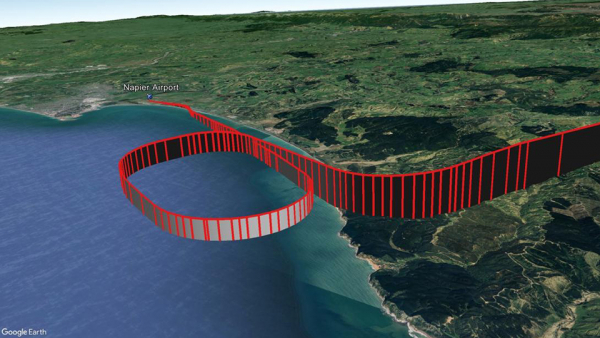 An Australian Transport Safety Bureau final report encourages flight crews to utilise published holding patterns if needed, to provide time to complete tasks prior to critical phases of flight, after an Embraer E190 descended below minimum safe altitude on approach into Napier, New Zealand.
An Australian Transport Safety Bureau final report encourages flight crews to utilise published holding patterns if needed, to provide time to complete tasks prior to critical phases of flight, after an Embraer E190 descended below minimum safe altitude on approach into Napier, New Zealand.
On 24 May 2023, the Pionair Australia-operated aircraft was being used for a non-scheduled (charter) passenger flight from Brisbane to Napier with a stop to clear customs in Auckland.
While on approach into Napier, the aircraft encountered unexpected icing conditions, requiring the flight crew to conduct the appropriate checklists in response.
Passing the intermediate approach fix a short time later, the flight crew noticed the aircraft was high on the approach profile.
To remedy this, the flight crew opted to conduct a descending orbit, and re-joined the profile at the appropriate altitude before an uneventful landing.
However, the orbit took the aircraft beyond the lateral tolerance of the intermediate approach segment, and when the aircraft exited this tolerance, it was flying below the 3,300 ft minimum safe altitude in the airspace surrounding the approach.
“The need to run through relevant checklists after unexpectedly entering icing conditions increased the flight crew’s workload during a critical phase of flight,” ATSB Director Transport Safety Stuart Macleod explained.
“Additionally, after delays in Auckland, the flight crew were concerned they would not land in time for ground handling to assist with disembarking the aircraft, and they reported feeling rushed during their preparations for the Auckland-Napier sector, and during the flight itself.”
Perceived time pressures and the belief the visual approach criteria could be complied with influenced a decision to conduct an orbit during the approach rather than conducting a missed approach, the investigation found.
Mr Macleod said the occurrence was a reminder of the effect perceived time pressures can have on flight safety.
“Crews should focus on arriving as safely as possible, and should take time to reassess the situation and develop a new plan if needed, when unexpected tasks arise,” he said.
“Flight crews can utilise published holding patterns on approaches to ensure all crew members have completed individual tasks, and are ready to provide their full attention during the critical stage of flight.
“Complying with a published holding pattern combined with flight path monitoring will ensure the aircraft has terrain clearance while the crew are completing other tasks.”
Read the report: Flight below lowest safe altitude involving ERJ-190, VH-IKJ, about 11km NNE of Napier Airport, New Zealand, on 24 May 2023



